In our hyperconnected world where stress hormones surge through our bloodstream like an unrelenting tide, the ancient practice of gardening emerges as a scientifically-validated antidote to modern anxiety. Recent groundbreaking research from Harvard Medical School reveals that just 20 minutes of intentional garden engagement can dramatically reduce cortisol levels, effectively rewiring your body’s stress response system in ways that pharmaceutical interventions struggle to match [1]. This isn’t merely about growing prettier flowers or harvesting fresher vegetables—it’s about fundamentally transforming how your nervous system processes and responds to the daily pressures that threaten your mental and physical wellbeing.
The neurobiological mechanisms underlying this transformation operate on multiple levels simultaneously, creating a cascade of positive changes that extend far beyond the garden gate. When your hands make contact with soil, when your eyes focus on the intricate patterns of leaf growth, and when your breathing naturally synchronizes with the rhythmic motions of planting and tending, your brain begins producing measurable increases in brain-derived neurotrophic factor (BDNF) and platelet-derived growth factor (PDGF)—two crucial proteins that literally rewire neural pathways associated with stress resilience and emotional regulation [2]. This biological rewiring doesn’t require years of practice or expensive equipment; it begins within minutes of engaging with living plants and compounds with each subsequent garden session.
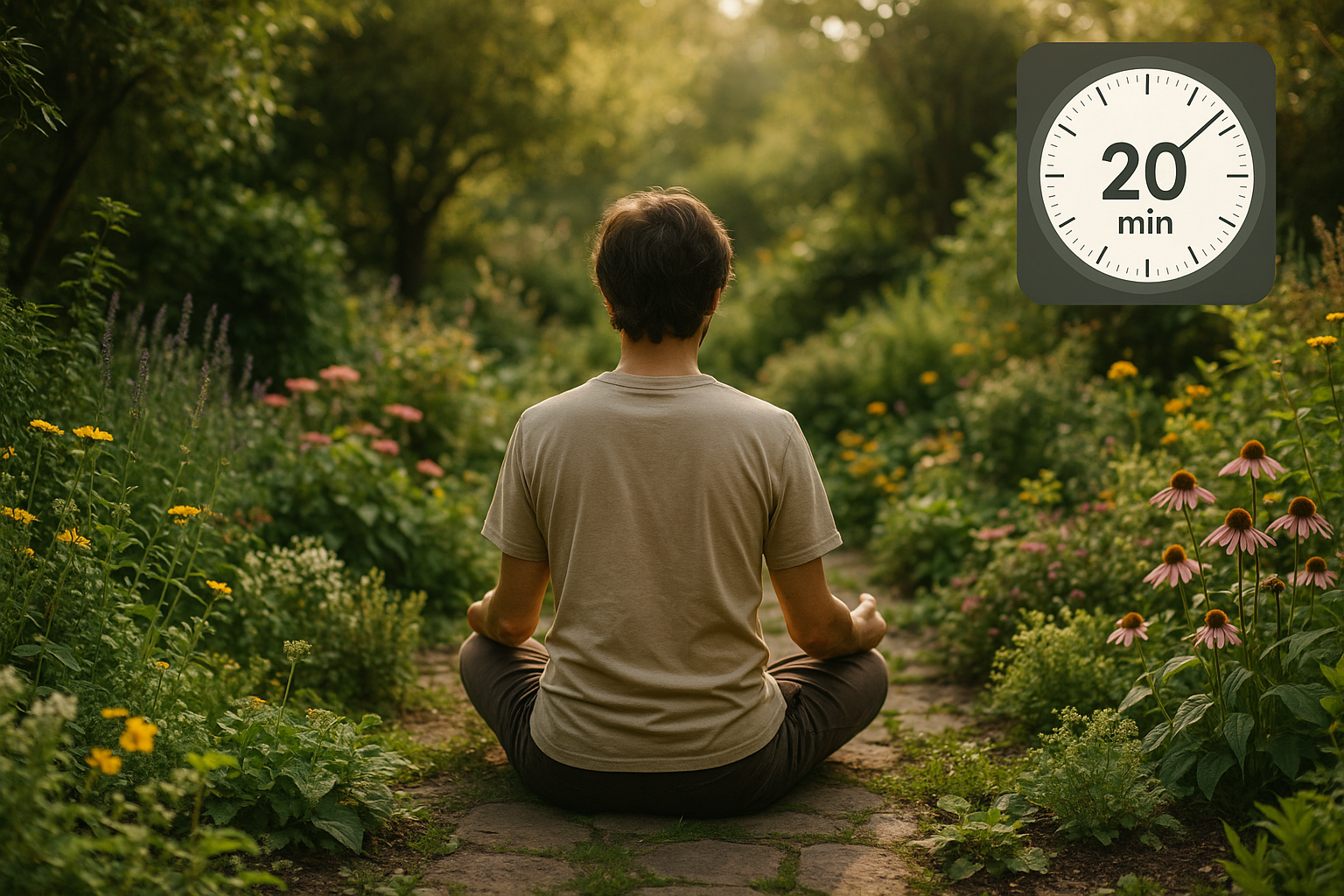
Understanding the precise mechanisms through which gardening accomplishes this neurological transformation empowers you to maximize these benefits through intentional practice. The tactile stimulation of working with soil activates your parasympathetic nervous system—your body’s natural relaxation response—while simultaneously exposing you to beneficial microorganisms like Mycobacterium vaccae, which research demonstrates can stimulate serotonin production in ways remarkably similar to prescription antidepressants, but without the side effects [3]. This convergence of physical, psychological, and microbiological factors creates what researchers term “environmental medicine”—a therapeutic intervention that harnesses the healing power of nature to restore optimal brain function and emotional balance.
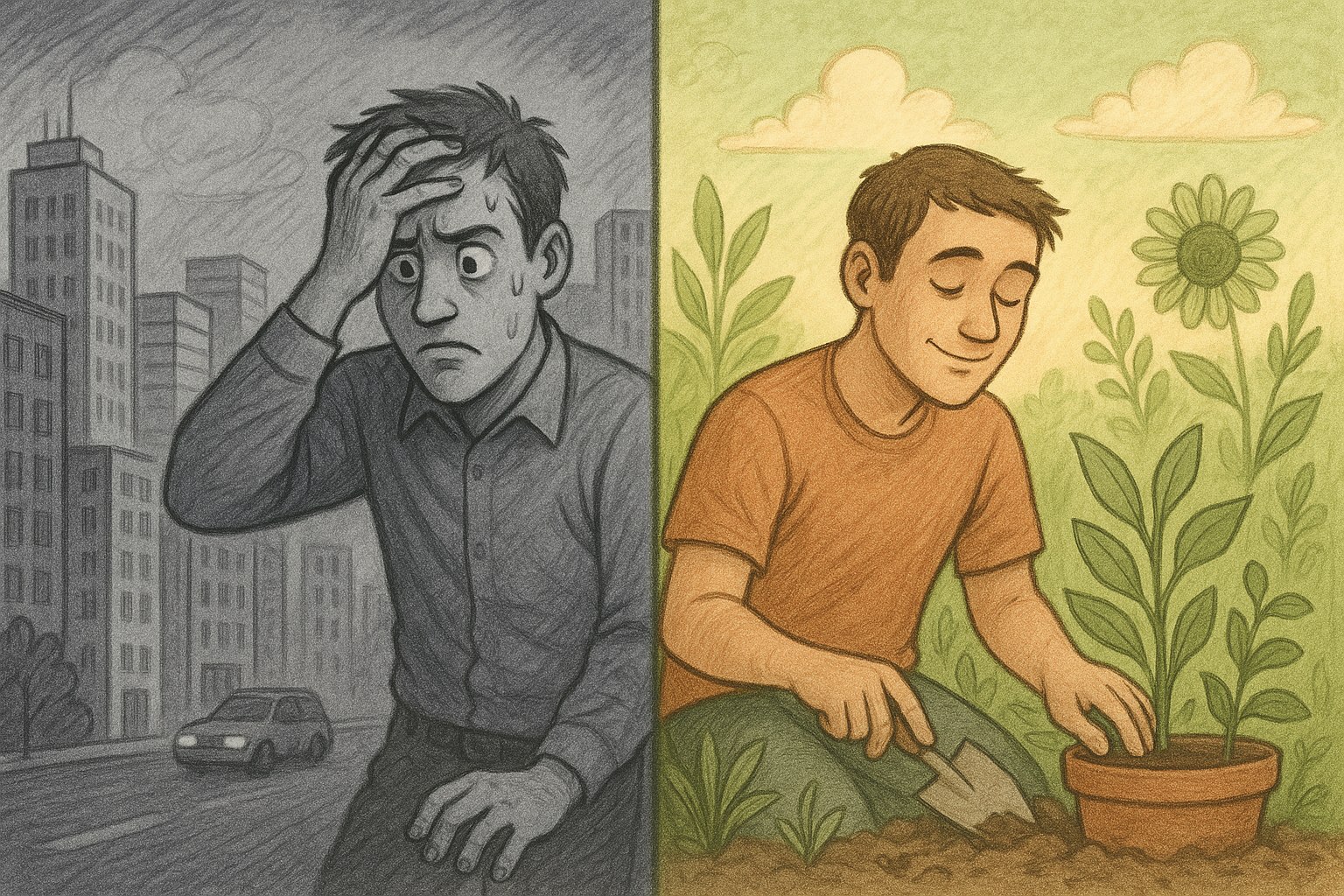
The Science Behind Your Garden’s Stress-Fighting Power
The relationship between gardening and stress reduction operates through sophisticated neurobiological pathways that researchers are only beginning to fully understand. When you engage in garden activities, your brain undergoes measurable changes that promote emotional stability and cognitive resilience. The most significant of these changes involves the regulation of cortisol, often called the “stress hormone,” which plays a crucial role in your body’s fight-or-flight response system.
A landmark study published in the Journal of Health Psychology examined 30 allotment gardeners who performed a stressful cognitive task before being randomly assigned to either 30 minutes of outdoor gardening or indoor reading [4]. The results were striking: while both activities led to decreases in cortisol during the recovery period, the decreases were significantly stronger in the gardening group. More importantly, positive mood was fully restored after gardening, while it continued to deteriorate during reading. This research provided the first experimental evidence that gardening can promote relief from acute stress through measurable biological mechanisms.
The cortisol-reducing effects of gardening extend beyond immediate stress relief to create lasting changes in how your nervous system responds to future stressors. Regular garden engagement appears to recalibrate your hypothalamic-pituitary-adrenal (HPA) axis—the complex system that governs your stress response—making you more resilient to daily pressures and less likely to experience the chronic elevation of stress hormones that contributes to anxiety, depression, and numerous physical health problems.
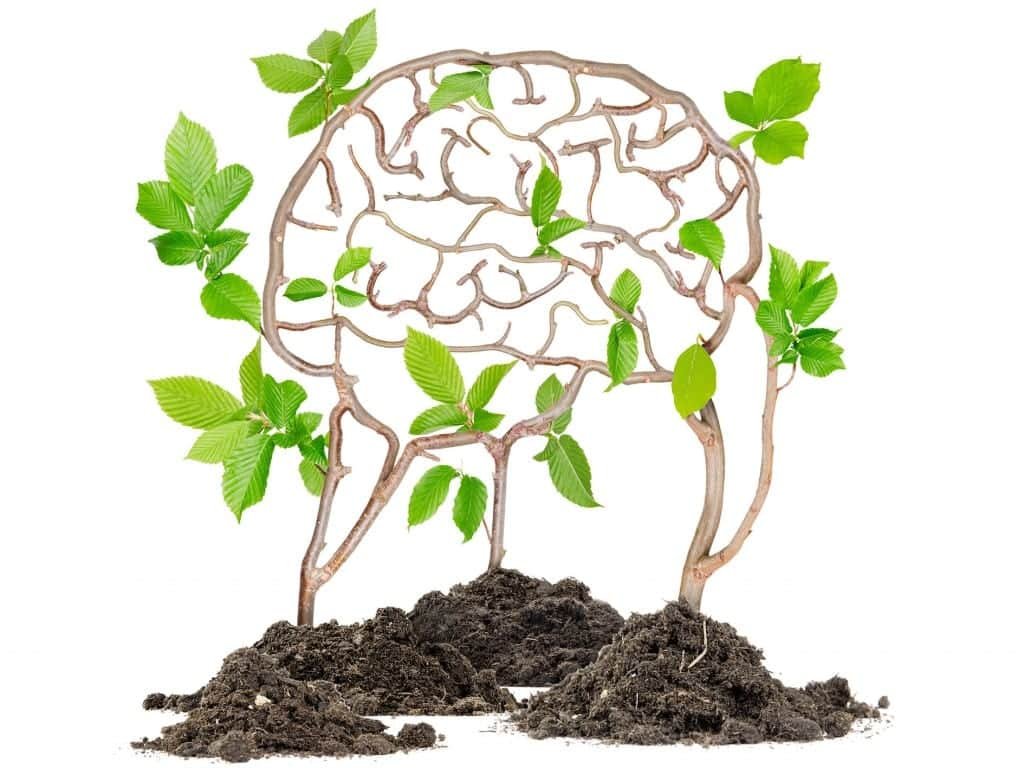
Research from Harvard Health Publishing confirms that spending 20 to 30 minutes in an outdoor setting where people feel they are interacting with nature produces the most significant drop in cortisol levels [1]. After this optimal timeframe, additional stress-reduction benefits accrue more slowly, suggesting that the 20-minute threshold represents a sweet spot for maximizing the neurobiological benefits of garden engagement. This finding has profound implications for busy individuals seeking efficient ways to manage stress and improve mental health.
The visual stimulation provided by garden environments also plays a crucial role in stress reduction. The color green, which predominates in most garden settings, has been scientifically proven to reduce eye strain and promote feelings of calm and restoration. This phenomenon, known as the “green effect,” helps explain why even brief exposure to garden environments can significantly improve mood and reduce symptoms of mental fatigue. The natural patterns, textures, and movements found in gardens provide what environmental psychologists call “soft fascination”—a gentle form of attention that allows the mind to recover from the directed attention fatigue characteristic of modern work environments.
How Your Brain Rewires During Garden Time
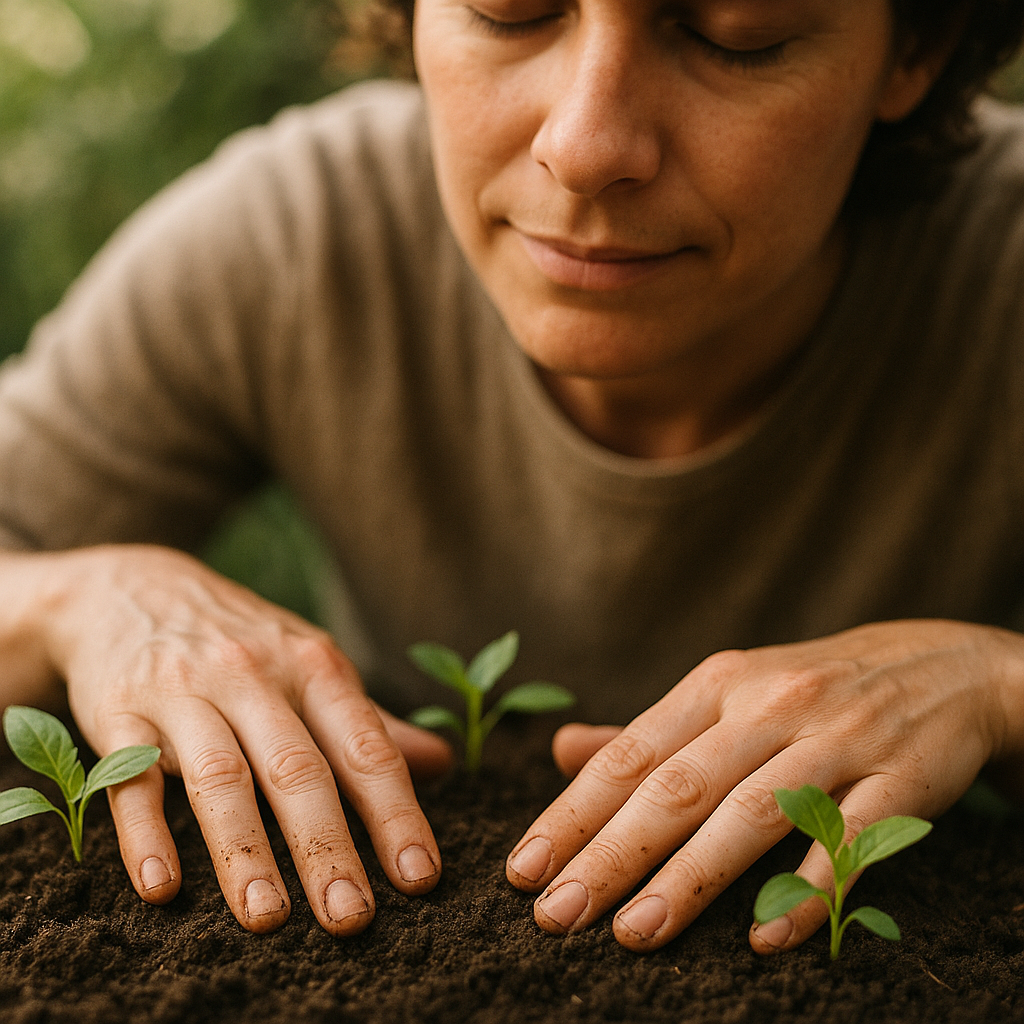
The neuroplasticity benefits of gardening extend far beyond simple stress reduction to encompass fundamental changes in brain structure and function. Recent research published in the International Journal of Environmental Research and Public Health demonstrates that gardening activities with low-to-moderate intensity can significantly increase levels of brain nerve growth factors, particularly BDNF and PDGF, which are essential for memory formation, cognitive function, and neuronal survival [2].
BDNF, often referred to as “Miracle-Gro for the brain,” plays a crucial role in the growth, maintenance, and survival of neurons. When BDNF levels increase through gardening activities, your brain becomes more capable of forming new neural connections, adapting to challenges, and recovering from stress-related damage. This protein is particularly important for the hippocampus, the brain region responsible for memory formation and emotional regulation, which is often compromised in individuals experiencing chronic stress or depression.
PDGF contributes to this neuroplastic transformation by promoting blood vessel growth and supporting neuronal survival. The increased vascular development in brain tissue enhances oxygen and nutrient delivery to neurons, creating an optimal environment for cognitive function and emotional stability. This vascular enhancement is particularly significant because chronic stress typically reduces blood flow to crucial brain regions, impairing their function and contributing to mood disorders.
The rhythmic, repetitive motions involved in gardening activities—planting, weeding, watering, harvesting—create a meditative state that allows the mind to process emotions and experiences in a healthy, constructive manner. This natural meditation differs from formal mindfulness practices in that it occurs spontaneously through engagement with meaningful tasks, making it accessible to individuals who struggle with traditional meditation techniques.
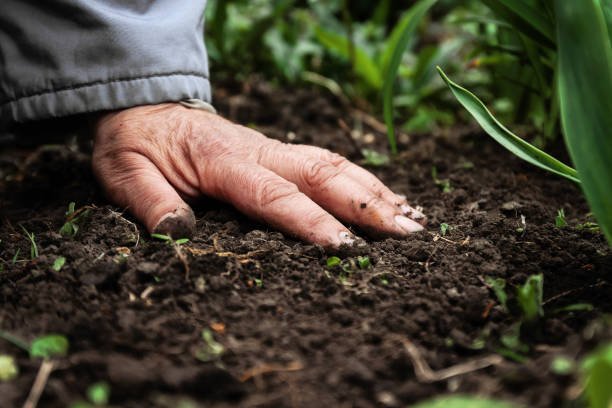
The tactile experience of working with soil provides additional neurological benefits through direct stimulation of sensory pathways. The varied textures, temperatures, and resistances encountered during garden work activate multiple sensory systems simultaneously, creating rich neural input that promotes brain plasticity and cognitive flexibility. This multisensory engagement is particularly beneficial for older adults, as it helps maintain cognitive function and may reduce the risk of age-related cognitive decline.
Exposure to beneficial soil microorganisms represents another fascinating aspect of gardening’s neurological benefits. Mycobacterium vaccae, a naturally occurring bacterium found in soil, has been shown to stimulate the production of serotonin when absorbed through skin contact or inhalation [3]. This natural mood enhancement occurs through mechanisms similar to those of selective serotonin reuptake inhibitors (SSRIs), but without the side effects commonly associated with pharmaceutical interventions.
The 20-Minute Sweet Spot: Maximizing Your Garden’s Therapeutic Potential
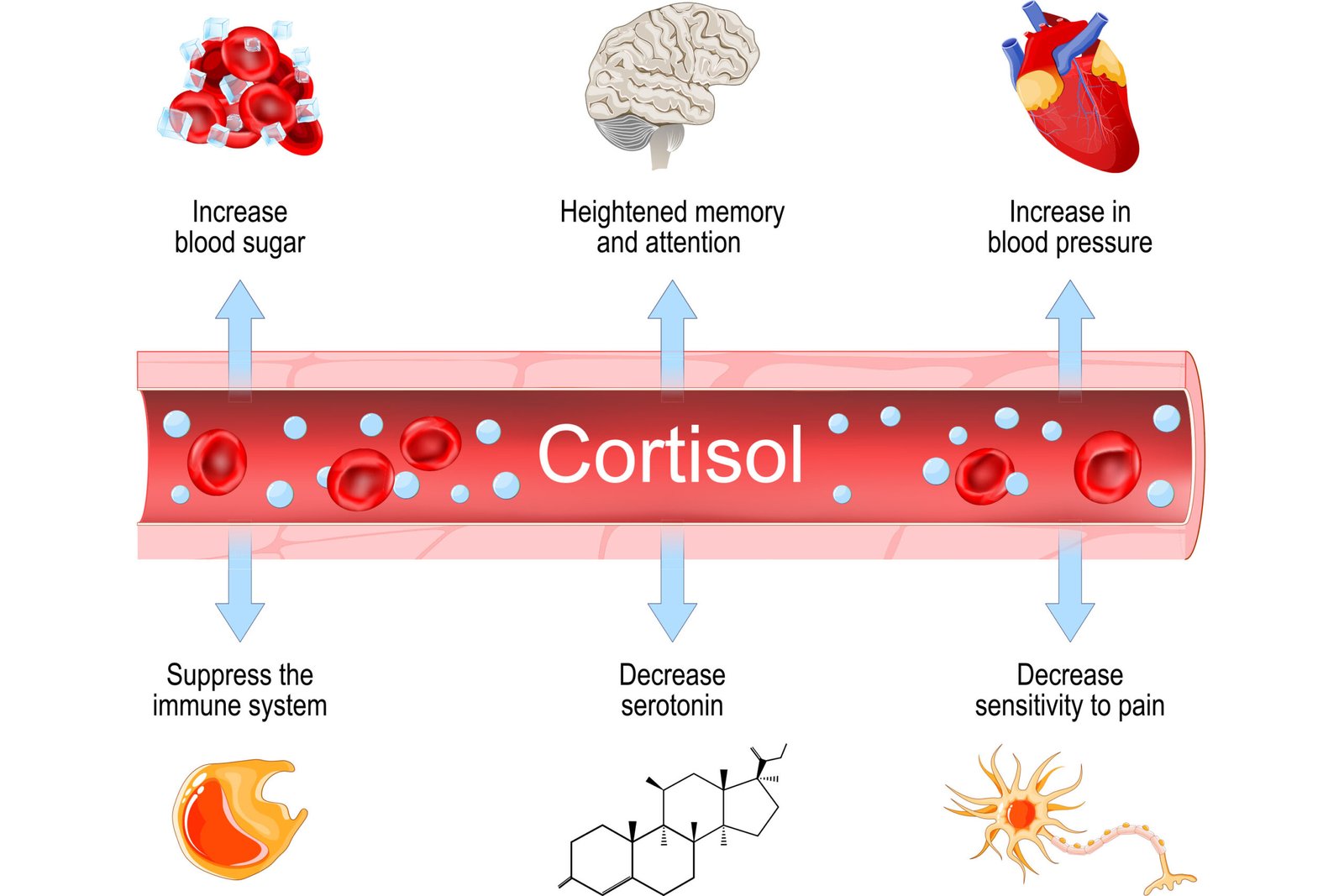
The specific timeframe of 20 minutes emerges from rigorous scientific research as the optimal duration for maximizing gardening’s stress-reduction benefits. This finding, published in Frontiers in Psychology, involved 36 participants who spent varying amounts of time in outdoor nature settings over an eight-week period [1]. Researchers measured cortisol levels through saliva samples taken before and after nature exposure, revealing that 20 to 30 minutes represented the threshold for maximum cortisol reduction.
Understanding why this timeframe proves optimal requires examining the physiological processes that occur during garden engagement. During the first 10 minutes of garden activity, your nervous system begins transitioning from sympathetic dominance (fight-or-flight) to parasympathetic activation (rest-and-digest). This transition involves measurable changes in heart rate variability, breathing patterns, and muscle tension that prepare your body for the deeper relaxation response that follows.
The 10-to-20-minute window represents the period of maximum cortisol reduction, as your HPA axis responds to the combined effects of physical activity, sensory engagement, and environmental stimulation. During this phase, your adrenal glands significantly reduce cortisol production while your brain increases the release of mood-enhancing neurotransmitters like serotonin and dopamine. The cumulative effect creates a powerful shift in your neurochemical balance that promotes feelings of calm, contentment, and emotional stability.
After 20 minutes, the rate of additional stress-reduction benefits begins to plateau, though continued garden engagement certainly provides other valuable benefits such as physical exercise, vitamin D synthesis from sun exposure, and the satisfaction of completing meaningful tasks. This plateau effect suggests that for individuals with limited time, focusing on consistent 20-minute garden sessions may be more beneficial than occasional longer periods of garden work.
The research also revealed that the time of day and specific garden settings did not significantly affect cortisol reduction, indicating that the benefits of garden engagement are remarkably consistent across different conditions. This finding is particularly encouraging for urban dwellers or individuals with limited access to large garden spaces, as even small container gardens or indoor plant arrangements can provide meaningful stress-reduction benefits when engaged with intentionally.
Practical Strategies for Your 20-Minute Garden Reset
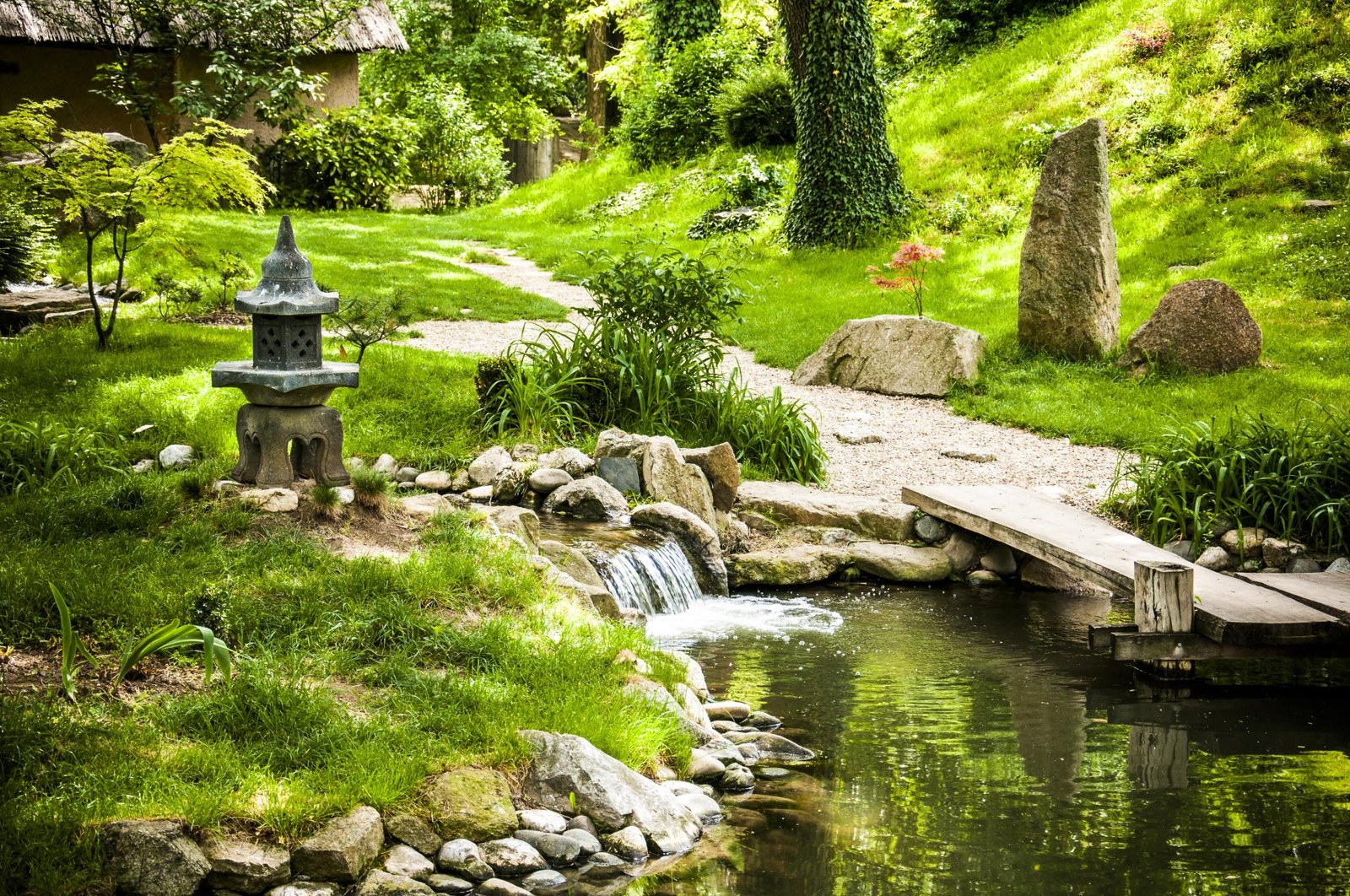
Implementing an effective 20-minute garden practice requires thoughtful planning and intentional engagement rather than simply spending time outdoors. The most successful approaches combine physical activity with mindful attention to create a comprehensive stress-reduction experience that maximizes the neurobiological benefits of garden interaction.
Begin your garden session by establishing a clear intention to disconnect from digital devices and external stressors. Research participants in the Harvard study were specifically instructed to avoid social media, phone calls, conversations, and reading during their nature time [1]. This digital detox component appears crucial for allowing your nervous system to fully transition into the relaxation response that drives cortisol reduction.
Focus your attention on tactile experiences that promote direct contact with soil and plants. Activities such as transplanting seedlings, hand-weeding, or preparing planting beds provide optimal opportunities for skin contact with beneficial soil microorganisms while engaging the repetitive motions that induce meditative states. The key is choosing tasks that require gentle, sustained attention rather than intense physical exertion that might elevate stress hormones.
Incorporate breathing awareness into your garden activities by synchronizing your breath with your movements. For example, inhale while reaching for a plant and exhale while gently placing it in prepared soil. This conscious breathing pattern enhances the parasympathetic nervous system activation that drives stress reduction while creating a natural rhythm that promotes mental calm.
Pay particular attention to sensory experiences that engage multiple systems simultaneously. Notice the temperature and texture of soil against your skin, the subtle fragrances released by plants and earth, the visual patterns created by light filtering through leaves, and the sounds of insects, birds, or wind moving through your garden space. This multisensory awareness amplifies the neuroplastic benefits of garden engagement while creating rich memories that can be recalled later for stress relief.
For individuals with limited outdoor space, container gardening and indoor plant care can provide similar benefits when approached with the same intentional mindfulness. Research suggests that the specific location matters less than the quality of engagement with living plants and natural materials. Even activities such as repotting houseplants, tending herb gardens on windowsills, or creating terrariums can trigger the neurobiological responses that reduce cortisol and promote emotional wellbeing.
Creating Your Personal Stress-Relief Garden Sanctuary
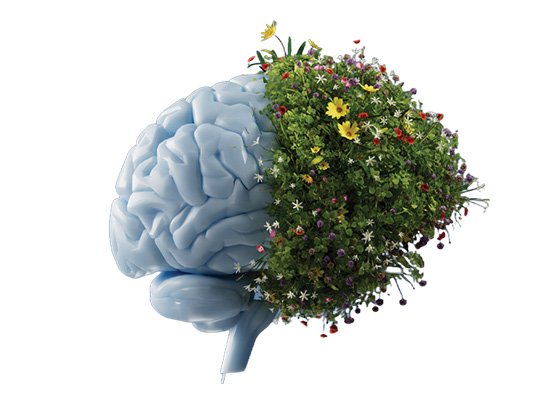
Designing a garden space specifically optimized for stress reduction involves incorporating elements that enhance the neurobiological benefits of plant interaction while creating an environment that naturally promotes relaxation and mindfulness. The most effective stress-relief gardens combine practical growing areas with contemplative spaces that encourage the kind of gentle attention that maximizes cortisol reduction.
Consider incorporating a variety of textures, colors, and fragrances that engage multiple senses simultaneously. Plants with soft, touchable foliage such as lamb’s ear, lavender, or ornamental grasses provide opportunities for tactile engagement that stimulates beneficial neural pathways. Fragrant herbs like rosemary, mint, and basil release aromatic compounds that can influence mood and cognitive function through the olfactory system’s direct connection to the limbic brain.
Water features, even simple ones like small fountains or bird baths, add auditory elements that mask urban noise while providing the soothing sounds that promote relaxation. The negative ions generated by moving water may also contribute to mood enhancement, though more research is needed to confirm this effect. The visual movement of water creates a focal point for gentle attention that supports the meditative aspects of garden engagement.
Seating areas positioned to take advantage of morning or evening light encourage regular use while providing opportunities for the vitamin D synthesis that supports mood regulation. Choose locations that offer views of your most dynamic garden areas—spaces where seasonal changes, plant growth, and wildlife activity provide ongoing sources of gentle fascination that support stress reduction.
For those interested in expanding their stress-relief garden practice, consider exploring meditation garden design principles that incorporate elements specifically chosen for their calming properties. Zen garden concepts can also provide inspiration for creating spaces that promote the kind of mindful attention that maximizes the neurobiological benefits of garden engagement.
The Broader Health Implications of Garden-Based Stress Management
The stress-reduction benefits of gardening extend far beyond immediate cortisol reduction to encompass wide-ranging improvements in physical and mental health. Chronic stress contributes to numerous health problems including cardiovascular disease, immune system dysfunction, digestive disorders, and accelerated aging. By providing an effective, natural method for managing stress response, regular garden engagement can help prevent or mitigate these stress-related health issues.
The immune system benefits of gardening appear particularly significant. Chronic elevation of cortisol suppresses immune function, making individuals more susceptible to infections, slower wound healing, and increased inflammation. The cortisol reduction achieved through regular garden practice helps restore optimal immune function while the exposure to diverse microorganisms in soil may actually strengthen immune responses through beneficial microbial exposure.
Cardiovascular health improvements associated with gardening include reduced blood pressure, improved heart rate variability, and decreased risk of heart disease. These benefits result from the combination of stress reduction, moderate physical activity, and the mood-enhancing effects of garden engagement. The gentle, sustained physical activity involved in most garden tasks provides cardiovascular benefits without the intensity that might trigger stress responses in some individuals.
Sleep quality often improves significantly with regular garden practice, likely due to the combination of stress reduction, physical activity, and exposure to natural light that helps regulate circadian rhythms. The mental calm achieved through garden engagement can persist into evening hours, promoting the relaxation necessary for restorative sleep. Additionally, the physical fatigue from garden work contributes to natural sleep onset without the need for pharmaceutical sleep aids.
For individuals dealing with anxiety, depression, or other mental health challenges, garden-based stress management can complement traditional therapeutic approaches. The sense of accomplishment from nurturing living things, the connection to natural cycles, and the physical evidence of positive impact can help counter feelings of helplessness or worthlessness that often accompany mood disorders. However, gardening should be viewed as a supportive practice rather than a replacement for professional mental health treatment when serious conditions are present.
Integrating Garden Therapy into Modern Life
Successfully incorporating 20-minute garden sessions into busy modern schedules requires strategic planning and realistic expectations. The key is consistency rather than perfection—regular brief sessions provide more cumulative benefit than occasional longer periods of garden work. Consider scheduling garden time during natural transition periods in your day, such as early morning before work responsibilities begin or early evening as a way to decompress from daily stressors.
For urban dwellers or individuals with limited outdoor access, indoor gardening options can provide similar stress-reduction benefits. Houseplant care, herb gardening on windowsills, or even tending small succulent collections can trigger the neurobiological responses that reduce cortisol when approached with mindful attention. The key is engaging with living plants in ways that provide tactile contact and require gentle, sustained focus.
Seasonal variations in garden engagement can help maintain interest and provide different types of stress-relief benefits throughout the year. Spring planting activities offer the excitement of new growth and future possibilities. Summer maintenance tasks provide opportunities for routine, meditative activities. Fall harvest and preparation work create satisfaction from completed cycles. Winter planning and indoor plant care maintain the connection to growing things during dormant outdoor periods.
Community gardening represents another valuable approach for individuals who lack private garden space or prefer social aspects of plant cultivation. Shared garden spaces provide opportunities for the stress-reduction benefits of plant interaction while adding social connection and community support that further enhance mental health benefits. Many urban areas offer community garden plots or volunteer opportunities that can provide regular access to garden-based stress relief.
For those seeking to deepen their understanding of gardening’s mental health benefits, exploring the broader research on therapeutic horticulture can provide additional insights into maximizing these benefits. Understanding how different garden activities contribute to stress reduction can help you design personalized approaches that address your specific needs and preferences.
Conclusion: Cultivating Resilience Through Garden Connection
The scientific evidence supporting gardening’s ability to reduce cortisol and rewire stress responses represents a profound validation of what gardeners have intuitively understood for generations. In just 20 minutes of intentional garden engagement, you can trigger measurable changes in brain chemistry that promote emotional resilience, cognitive function, and overall wellbeing. This isn’t merely about creating beautiful outdoor spaces—it’s about harnessing the therapeutic power of plant interaction to build lasting stress resilience in an increasingly demanding world.
The neurobiological mechanisms underlying these benefits—from increased BDNF and PDGF production to beneficial microbial exposure—demonstrate that gardening functions as a form of environmental medicine that addresses stress at its biological roots. Unlike pharmaceutical interventions that often come with side effects, garden-based stress management provides a natural, accessible approach to mental health support that becomes more effective with regular practice.
As research continues to unveil the sophisticated ways that garden engagement influences brain function and stress response, the potential applications for therapeutic horticulture will likely expand. For now, the evidence clearly supports incorporating regular 20-minute garden sessions into your stress management toolkit as an evidence-based strategy for promoting mental health and emotional resilience.
Whether you’re tending a small container garden on a balcony or working in an expansive backyard landscape, the key is approaching your garden time with intention, mindfulness, and appreciation for the profound healing that occurs when human hands connect with soil and growing things. In a world that often feels disconnected from natural rhythms and processes, your garden offers a pathway back to the kind of calm, grounded presence that supports optimal mental and physical health.
The transformation from cortisol to calm doesn’t require dramatic lifestyle changes or expensive interventions—it simply requires 20 minutes, some soil, and the willingness to engage with the living world that surrounds us. In making this simple commitment to regular garden practice, you’re not just growing plants; you’re cultivating the neurobiological foundation for a more resilient, peaceful, and emotionally balanced life.
References
[1] Harvard Health Publishing. (2019). A 20-minute nature break relieves stress. Retrieved from https://www.health.harvard.edu/mind-and-mood/a-20-minute-nature-break-relieves-stress
[2] Park, S. A., Lee, A. Y., Park, H. G., & Lee, W. L. (2019). Benefits of gardening activities for cognitive function according to measurement of brain nerve growth factor levels. International Journal of Environmental Research and Public Health, 16(5), 760. Retrieved from https://pmc.ncbi.nlm.nih.gov/articles/PMC6427672/
[3] Lowry, C. A., Holzer, P., Zernig, G., Sartori, S. B., Whittle, N., Singewald, N., … & Reber, S. O. (2007). Identification of an immune-responsive mesolimbocortical serotonergic system: potential role in regulation of emotional behavior. Neuroscience, 146(2), 756-772.
[4] Van den Berg, A. E., & Custers, M. H. (2011). Gardening promotes neuroendocrine and affective restoration from stress. Journal of Health Psychology, 16(1), 3-11. Retrieved from

My name is Michelle Warren, and I’m the founder of Peaceful Gardening. As a 10-year breast cancer survivor, I’ve discovered the profound therapeutic power of gardening. This journey has not only helped me recover but has also become my passion and a source of ongoing peace and joy.
Peaceful Gardening was born from my desire to share the healing benefits of gardening with others. Whether you’re facing health challenges, dealing with stress, or simply looking to connect more deeply with nature, this space is for you.
Over the past decade, I’ve cultivated not just plants, but a deep understanding of how gardening can positively impact mental health. I’ve worked with local community gardens, led workshops on mindful gardening practices, and collaborated with mental health professionals to develop gardening-based stress reduction programs.
Peaceful Gardening was born from my desire to share the healing benefits of gardening with others. Whether you’re facing health challenges, dealing with stress, or simply looking to connect more deeply with nature, this space is for you.
Here, you’ll find evidence-based advice on using gardening as a tool for mindfulness, stress relief, and emotional healing. I share personal stories, practical tips, and scientifically-backed information on how to create your own therapeutic garden space, no matter the size of your yard or balcony.
My mission is to help you discover the joy, peace, and healing that comes from nurturing plants and connecting with nature. Join me in exploring how the simple act of tending to a garden can transform your mental and emotional wellbeing.
Welcome to Peaceful Gardening – let’s grow together towards better mental health!”

